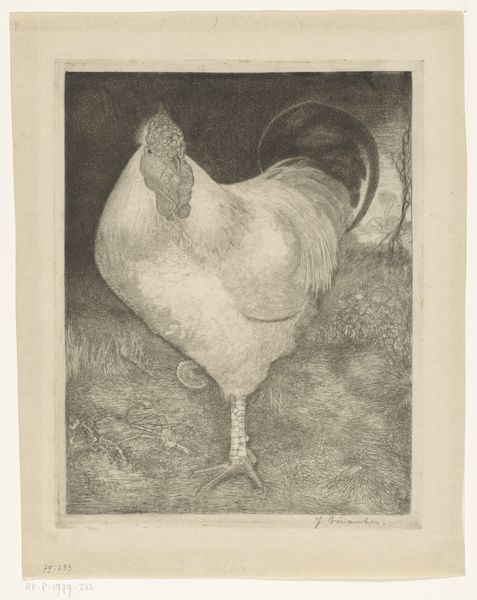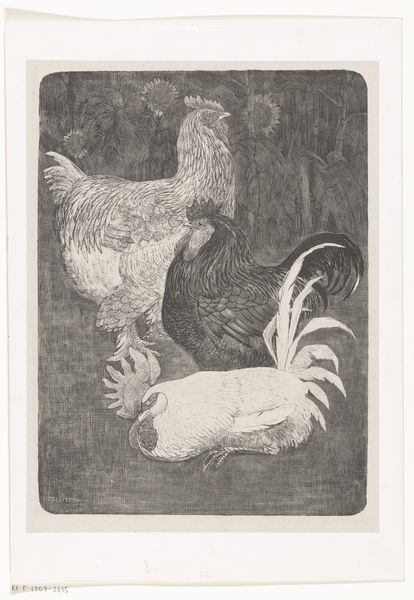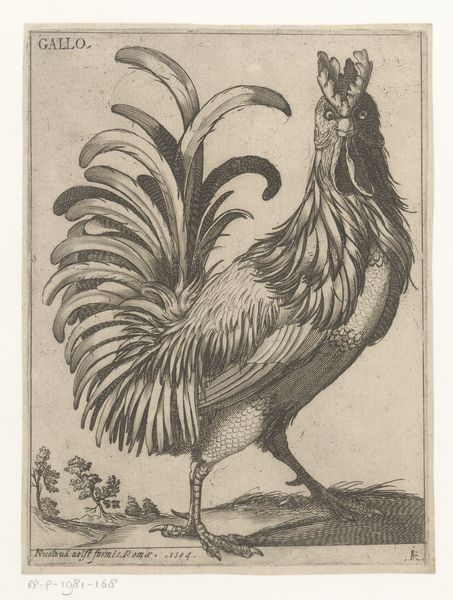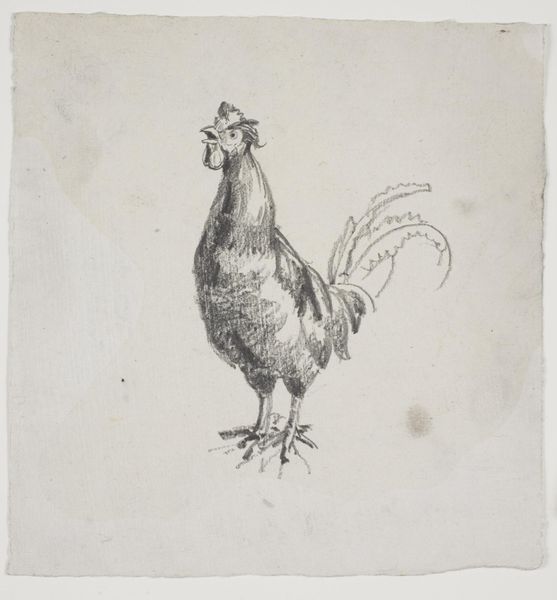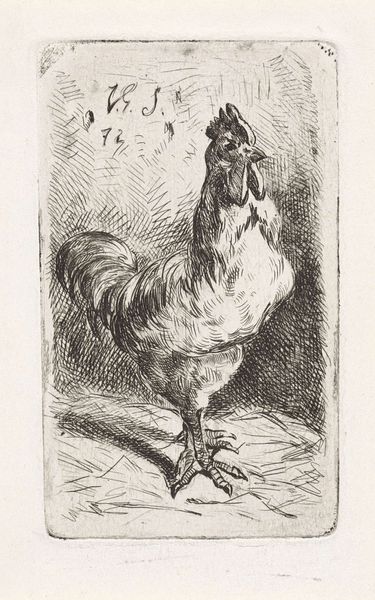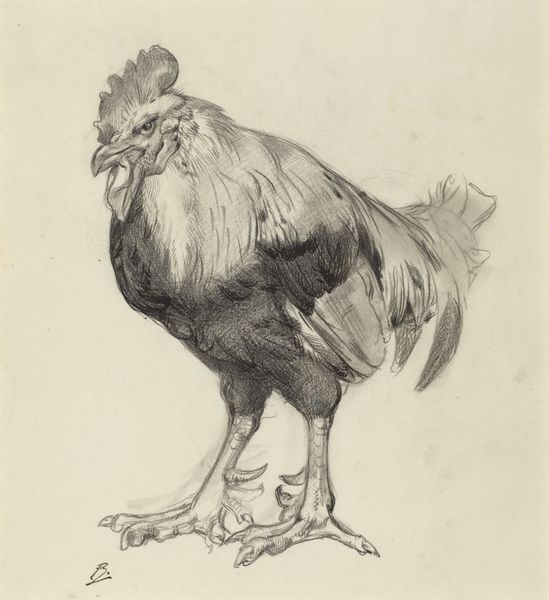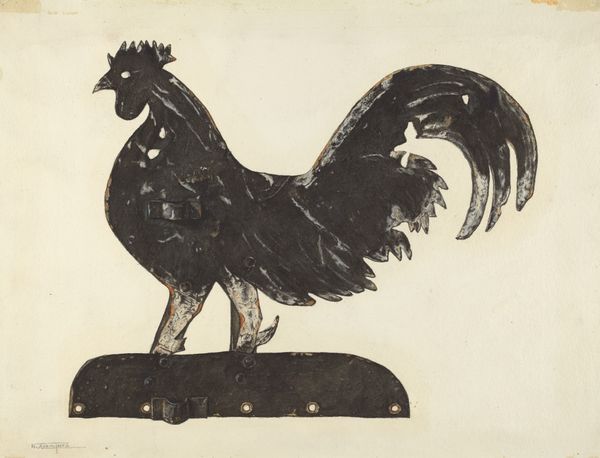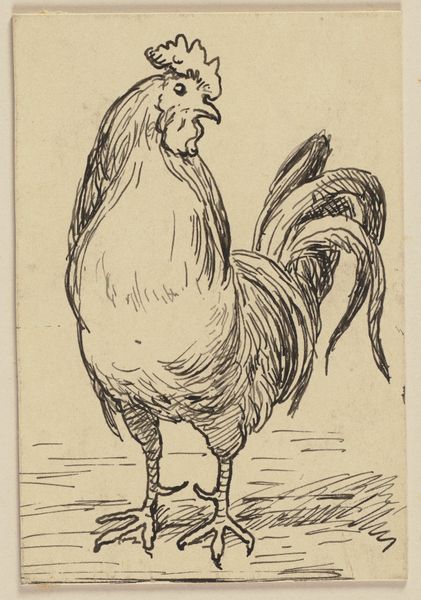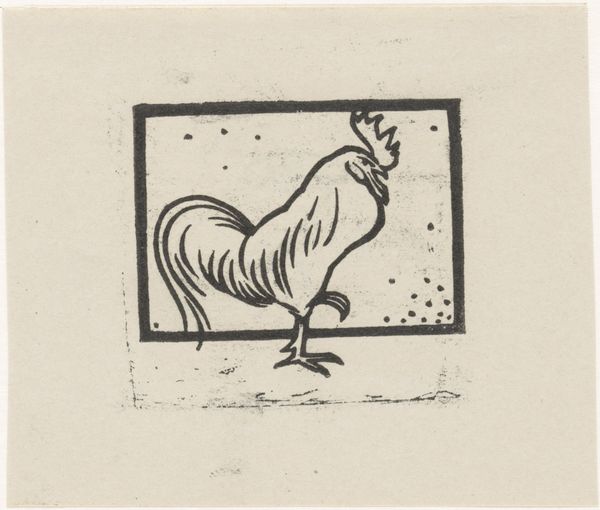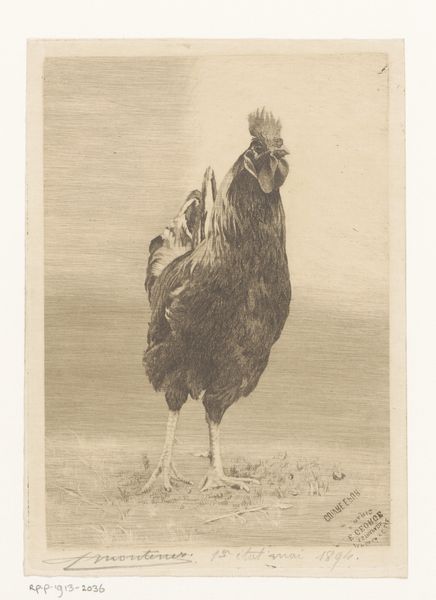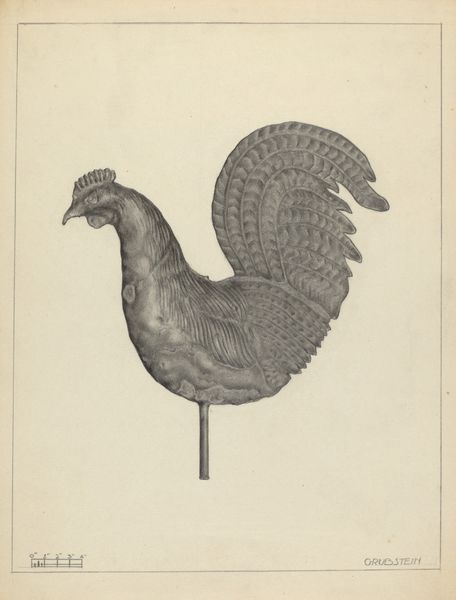
print, etching
# print
#
etching
#
realism
Dimensions: height 233 mm, width 184 mm
Copyright: Rijks Museum: Open Domain
Editor: This is Jan Mankes' "Rooster on One Leg," an etching from 1917. I’m struck by the rooster's confident gaze and the detailed textures achieved through etching. What resonates with you when you view this work? Curator: Mankes’ choice to portray the rooster—a potent symbol—at a time of immense social upheaval speaks volumes. World War I raged, disrupting traditional power structures. How does seeing the rooster poised assertively on one leg, seemingly balanced yet vulnerable, make you think about the gendered constructions of power prevalent in that era? Editor: That's fascinating. I hadn't considered the wartime context. So the rooster, usually seen as masculine and dominant, is presented with a subtle fragility? Curator: Precisely. The etching technique itself, with its intricate lines, adds another layer. Mankes often depicted nature with a certain intimacy. Considering the rural settings he favoured, could this be interpreted as Mankes challenging the industrialization and militarization that defined the period? The rooster becomes a quiet act of resistance. What are your thoughts? Editor: I see how Mankes positions the rooster, almost as a quiet defiance. It’s powerful because of its understated nature. Curator: Exactly! It is an excellent example of how art can subtly interrogate social norms. This print shows that Mankes created more than just a picture of a rooster. Editor: It's incredible how a simple image can reveal layers of social and political commentary. I’ll definitely view art with broader cultural awareness now! Curator: Wonderful! Understanding these complex dialogues adds such depth to experiencing art.
Comments
No comments
Be the first to comment and join the conversation on the ultimate creative platform.
